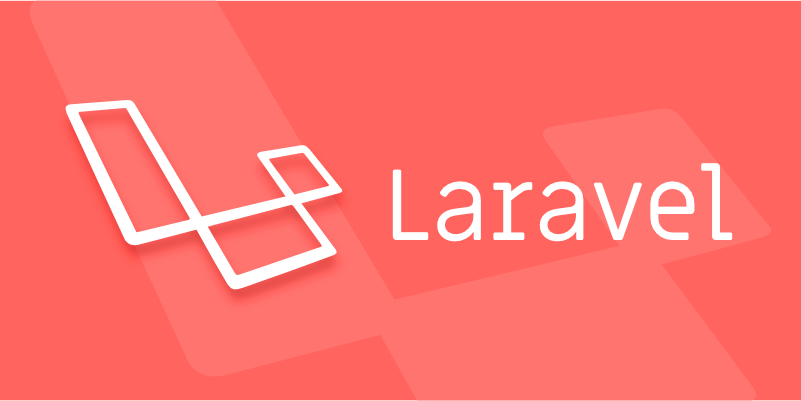Configuring and sending email notifications in Laravel
To set up email notifications in Laravel, first configure mail settings in the .env file with SMTP or service-specific details like MAIL\_MAILER, MAIL\_HOST, MAIL\_PORT, MAIL\_USERNAME, MAIL\_PASSWORD, and MAIL\_FROM\_ADDRESS. Next, test the configuration using Mail::raw() to send a sample email. Then create a notification class via php artisan make:notification and define the via() method to specify 'mail' as the channel and toMail() to structure the email content. Implement ShouldQueue for better performance. Afterward, send notifications either by calling notify() on a user model or using the Notification facade for multiple users. Lastly, customize the email appearance by publishing Laravel’s notification assets and editing the Blade templates under resources/views/vendor/notifications to align with your branding.

Setting up email notifications in Laravel is straightforward, especially with the built-in notification system. You don’t need to write everything from scratch — Laravel gives you a clean way to send both database and email notifications. Here’s how to configure and send email notifications effectively.

Setting Up Mail Configuration
Before sending any emails, make sure your mail settings are correct. Laravel uses the .env file for configuration, so open that and fill in your SMTP or service-specific details.

MAIL_MAILER=smtp
MAIL_HOST=smtp.example.com
MAIL_PORT=587
MAIL_USERNAME=your@example.com
MAIL_PASSWORD=yourpassword
MAIL_ENCRYPTION=tls
MAIL_FROM_ADDRESS=from@example.com
MAIL_FROM_NAME="${APP_NAME}"Once configured, test it by using Mail::raw() in a route or controller to send a quick test message:
use Illuminate\Support\Facades\Mail;
Mail::raw('Test email body', function ($message) {
$message->to('test@example.com')->subject('Test Email');
});If that works, you’re good to move on to notifications.

Creating a Notification Class
Laravel notifications can be sent via multiple channels — email being one of the most common. To generate a new notification class, run:
php artisan make:notification AccountUpdated
This creates a file in app/Notifications. Open it and define what should happen when this notification is triggered. Here’s a basic example:
use Illuminate\Bus\Queueable;
use Illuminate\Contracts\Queue\ShouldQueue;
use Illuminate\Notifications\Notification;
class AccountUpdated extends Notification implements ShouldQueue
{
use Queueable;
public function __construct()
{
//
}
public function via($notifiable)
{
return ['mail'];
}
public function toMail($notifiable)
{
return (new \Illuminate\Notifications\Messages\MailMessage)
->line('Your account has been successfully updated.')
->action('View Account', url('/account'))
->line('Thank you for using our application!');
}
}A few things to note:
- The
via()method defines which channels to use (mail,database, etc.) toMail()builds the actual email content.- Implementing
ShouldQueuehelps avoid slowing down request processing.
Sending the Notification
To send a notification, you can either use the notify() helper on a user model or use the Notification facade.
Option 1: Notify a specific user
use App\Notifications\AccountUpdated; $user->notify(new AccountUpdated());
Option 2: Send to multiple users or notifiable models
use Illuminate\Support\Facades\Notification; use App\Notifications\AccountUpdated; Notification::send($users, new AccountUpdated());
Make sure $users is a collection of models that implement the Notifiable trait.
You can trigger these notifications after certain actions — like updating a profile, completing a payment, or logging in from a new device.
Customizing Email Appearance
By default, Laravel uses a simple layout for email notifications. If you want to customize the look, publish the notification assets:
php artisan vendor:publish --tag=laravel-notifications
This copies the Blade templates into resources/views/vendor/notifications. You can now edit the HTML and CSS to match your brand style.
Some customization tips:
- Modify the header/logo section
- Update default colors and fonts
- Add custom footer links or branding
Also, if you're sending transactional emails at scale, consider using services like Mailgun, SendGrid, or Amazon SES. Just update the MAIL_MAILER value in .env accordingly.
That's basically it. Once your mailer is set up and your notification logic is in place, sending emails becomes just another part of your app flow. It’s not complicated, but there are a few moving parts — especially around templates and delivery drivers — so double-check each step if something doesn’t arrive as expected.
The above is the detailed content of Configuring and sending email notifications in Laravel. For more information, please follow other related articles on the PHP Chinese website!

Hot AI Tools

Undress AI Tool
Undress images for free

Undresser.AI Undress
AI-powered app for creating realistic nude photos

AI Clothes Remover
Online AI tool for removing clothes from photos.

Clothoff.io
AI clothes remover

Video Face Swap
Swap faces in any video effortlessly with our completely free AI face swap tool!

Hot Article

Hot Tools

Notepad++7.3.1
Easy-to-use and free code editor

SublimeText3 Chinese version
Chinese version, very easy to use

Zend Studio 13.0.1
Powerful PHP integrated development environment

Dreamweaver CS6
Visual web development tools

SublimeText3 Mac version
God-level code editing software (SublimeText3)

Hot Topics
 Working with pivot tables in Laravel Many-to-Many relationships
Jul 07, 2025 am 01:06 AM
Working with pivot tables in Laravel Many-to-Many relationships
Jul 07, 2025 am 01:06 AM
ToworkeffectivelywithpivottablesinLaravel,firstaccesspivotdatausingwithPivot()orwithTimestamps(),thenupdateentrieswithupdateExistingPivot(),managerelationshipsviadetach()andsync(),andusecustompivotmodelswhenneeded.1.UsewithPivot()toincludespecificcol
 Adding multilingual support to a Laravel application
Jul 03, 2025 am 01:17 AM
Adding multilingual support to a Laravel application
Jul 03, 2025 am 01:17 AM
The core methods for Laravel applications to implement multilingual support include: setting language files, dynamic language switching, translation URL routing, and managing translation keys in Blade templates. First, organize the strings of each language in the corresponding folders (such as en, es, fr) in the /resources/lang directory, and define the translation content by returning the associative array; 2. Translate the key value through the \_\_() helper function call, and use App::setLocale() to combine session or routing parameters to realize language switching; 3. For translation URLs, paths can be defined for different languages through prefixed routing groups, or route alias in language files dynamically mapped; 4. Keep the translation keys concise and
 Sending different types of notifications with Laravel
Jul 06, 2025 am 12:52 AM
Sending different types of notifications with Laravel
Jul 06, 2025 am 12:52 AM
Laravelprovidesacleanandflexiblewaytosendnotificationsviamultiplechannelslikeemail,SMS,in-appalerts,andpushnotifications.Youdefinenotificationchannelsinthevia()methodofanotificationclass,andimplementspecificmethodsliketoMail(),toDatabase(),ortoVonage
 Understanding and creating custom Service Providers in Laravel
Jul 03, 2025 am 01:35 AM
Understanding and creating custom Service Providers in Laravel
Jul 03, 2025 am 01:35 AM
ServiceProvider is the core mechanism used in the Laravel framework for registering services and initializing logic. You can create a custom ServiceProvider through the Artisan command; 1. The register method is used to bind services, register singletons, set aliases, etc., and other services that have not yet been loaded cannot be called; 2. The boot method runs after all services are registered and is used to register event listeners, view synthesizers, middleware and other logic that depends on other services; common uses include binding interfaces and implementations, registering Facades, loading configurations, registering command-line instructions and view components; it is recommended to centralize relevant bindings to a ServiceProvider to manage, and pay attention to registration
 Configuring and sending email notifications in Laravel
Jul 05, 2025 am 01:26 AM
Configuring and sending email notifications in Laravel
Jul 05, 2025 am 01:26 AM
TosetupemailnotificationsinLaravel,firstconfiguremailsettingsinthe.envfilewithSMTPorservice-specificdetailslikeMAIL\_MAILER,MAIL\_HOST,MAIL\_PORT,MAIL\_USERNAME,MAIL\_PASSWORD,andMAIL\_FROM\_ADDRESS.Next,testtheconfigurationusingMail::raw()tosendasam
 Managing database state for testing in Laravel
Jul 13, 2025 am 03:08 AM
Managing database state for testing in Laravel
Jul 13, 2025 am 03:08 AM
Methods to manage database state in Laravel tests include using RefreshDatabase, selective seeding of data, careful use of transactions, and manual cleaning if necessary. 1. Use RefreshDatabasetrait to automatically migrate the database structure to ensure that each test is based on a clean database; 2. Use specific seeds to fill the necessary data and generate dynamic data in combination with the model factory; 3. Use DatabaseTransactionstrait to roll back the test changes, but pay attention to its limitations; 4. Manually truncate the table or reseed the database when it cannot be automatically cleaned. These methods are flexibly selected according to the type of test and environment to ensure the reliability and efficiency of the test.
 Strategies for optimizing Laravel application performance
Jul 09, 2025 am 03:00 AM
Strategies for optimizing Laravel application performance
Jul 09, 2025 am 03:00 AM
Laravel performance optimization can improve application efficiency through four core directions. 1. Use the cache mechanism to reduce duplicate queries, store infrequently changing data through Cache::remember() and other methods to reduce database access frequency; 2. Optimize database from the model to query statements, avoid N 1 queries, specifying field queries, adding indexes, paging processing and reading and writing separation, and reduce bottlenecks; 3. Use time-consuming operations such as email sending and file exporting to queue asynchronous processing, use Supervisor to manage workers and set up retry mechanisms; 4. Use middleware and service providers reasonably to avoid complex logic and unnecessary initialization code, and delay loading of services to improve startup efficiency.
 When to use Contracts versus Facades in Laravel
Jul 08, 2025 am 12:45 AM
When to use Contracts versus Facades in Laravel
Jul 08, 2025 am 12:45 AM
In Laravel, the choice of Contracts and Facades depends on the dependency structure and coupling degree. Contracts are interfaces for easy testing and replacement; Facades provides static syntax sugar, suitable for simple scenarios. 1.Contracts are used to clarify dependencies, improve testability and follow SOLID principles; 2. Facades are suitable for situations where concise syntax is pursued without frequent replacement implementations; 3. Helper functions are more concise but are not conducive to testing and maintenance. Comprehensive use of both is better: use Contracts for complex logic, and use Facades for simple operations.







